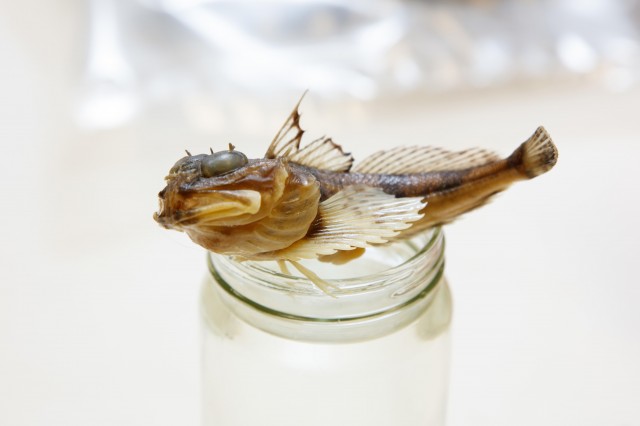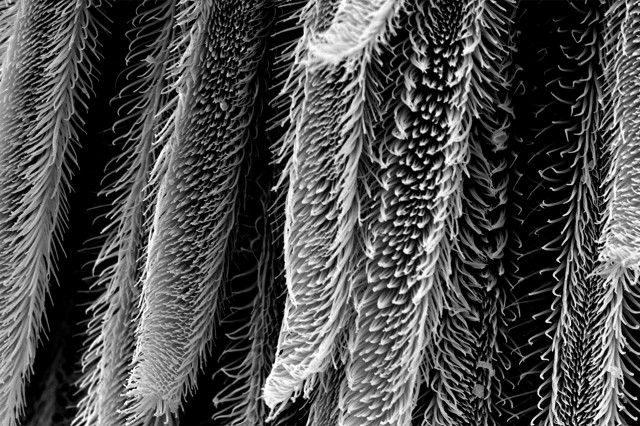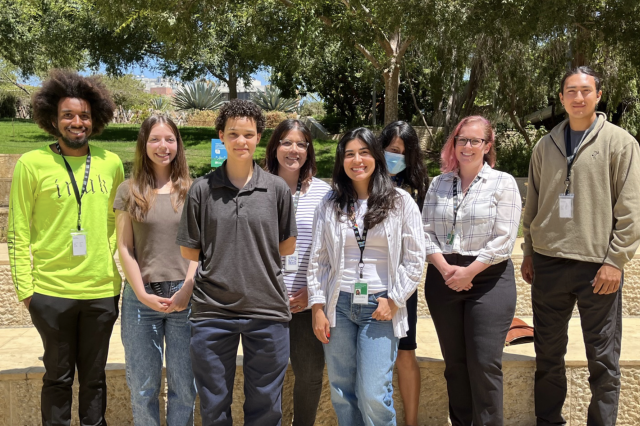A Deep Dive on Microplastics
Museum scientists are examining fish guts to understand the pervasiveness and types of plastics invading California waters over time, which may help us understand how that pollution affects sea creatures and even land-loving pescatarians.
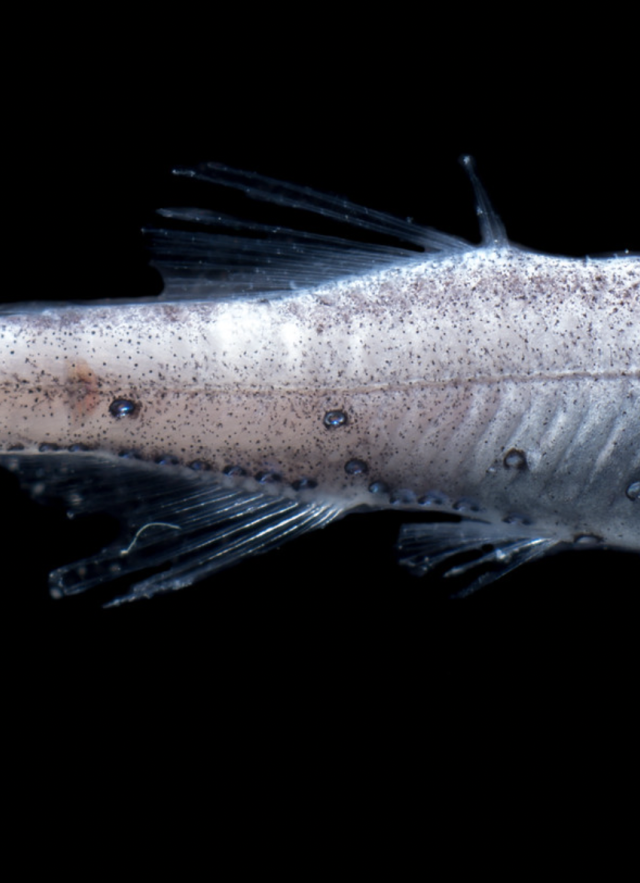
Published June 5, 2024
Plastics have been amassing in the environment for decades. In oceans, these synthetic materials have repeatedly broken down into smaller and smaller pieces and become available for ingestion by a multitude of organisms, including fish. Currently, there is a paucity of information about the prevalence of microplastics in Southern California fish across time, limiting public understanding of how these infinitesimal pollutants may be impacting the coastal chain of nutritional interdependence—who eats what—called food webs.
To address that knowledge gap, NHM’s Assistant Curator of Ichthyology William Ludt, Marine Biologist Jessica D. Flores, and NHM Curator of Mineral Sciences, Aaron Celestian are examining microplastics within an abundant mesopelagic fish, the northern lampfish, Stenobrachius leucopsarus, caught in Southern California waters, from the 1940s to the present. The gastrointestinal tract of a preserved specimen is a great system to study, as it provides insight into the ecological conditions of a specific location at a particular moment in time.
Ingestion Investigation
How do you go about examining fish guts? Through dissection and potassium hydroxide digestion, the scientists extracted and processed the contents onto glass filters. They imaged each filter with a Keyence microscope, which made it possible to determine microplastic quantities, particle size, shape, and color. Then in the Mineral Sciences Department, they used Raman spectroscopy to analyze and identify the types of plastics found. The intent is to collect data that allow for the establishment of a historical timeline of microplastics in the region, as well as provide a better understanding of the scope of plastic pollution and its ready availability to marine life. This is the first study of its kind looking at microplastics in fish across time in the Pacific Ocean.
Tiny Particles, Big Ocean
“The oceans are a huge place, absolutely massive. And yet, no matter where I travel and dive, you see plastic everywhere,” said Ludt. “This is a hot topic right now, but when you really look at the history of microplastic research, it doesn't go back very far…The ultimate goal is to try to figure out how concentrations of microplastics have changed over time in our coastal fish.”
In doing the research, they might even be able to identify the source of the plastics. “Obviously, if there is a major producer of polyethylene bags in the area, and those break down, and all that we're finding is polyethylene, and it's the right color of those bags, it could potentially point us in the right direction of some of the major sources of plastic pollution.” But more likely than finding the “major plastic producer that is polluting the oceans" would be to find a category, such as microfibers in clothing.
“Unless you're wearing 100% cotton everything, or 100% wool, you have plastics in your clothes, and those shed during wash cycles. Knowing that can help impact policy and foster actions that could mitigate the problem.” For example, there are filtering systems that exist now that you can add onto your washing machine to reduce microplastic pollution.
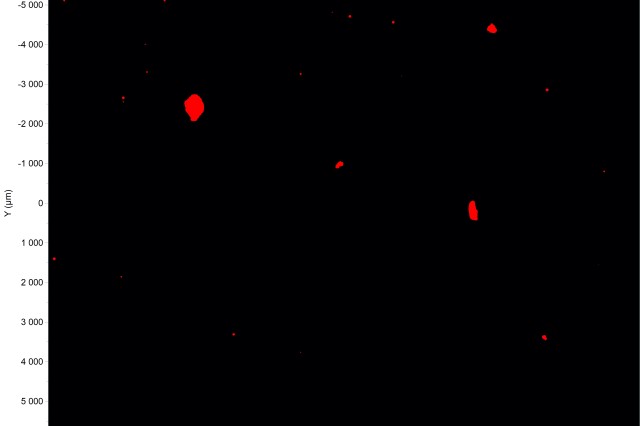
The red areas are what microplastics from fish guts look like under the Raman microscope
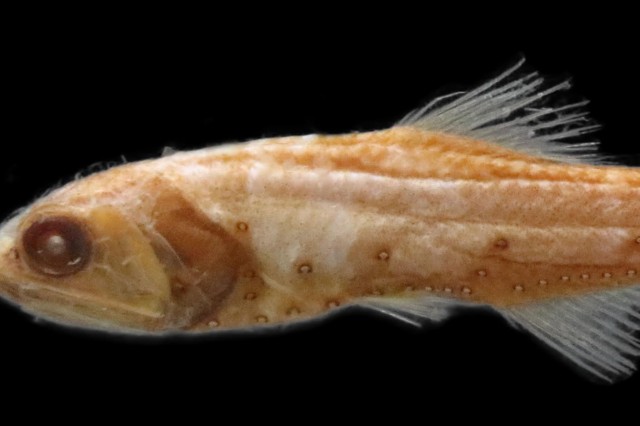
A northern lampfish specimen in NHM's Ichthyology Collection, caught March 19, 1970, from the San Pedro Basin.
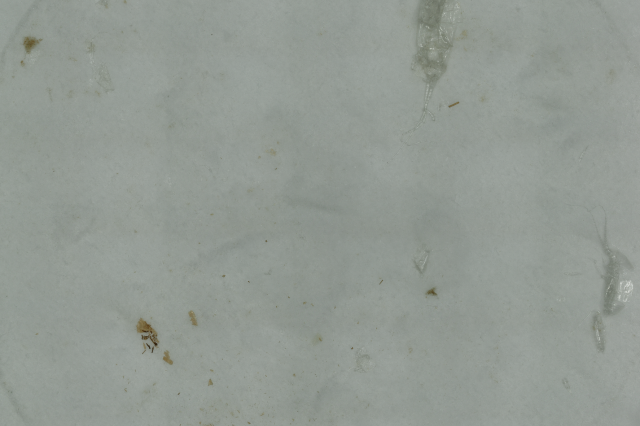
Keyence image of gut contents, including some undigested biological material and plastic fibers.
1 of 1
The red areas are what microplastics from fish guts look like under the Raman microscope
A northern lampfish specimen in NHM's Ichthyology Collection, caught March 19, 1970, from the San Pedro Basin.
Keyence image of gut contents, including some undigested biological material and plastic fibers.
Flores said she’s excited to be part of such an important research project. She received her B.S. in Marine Biology from California State University, Long Beach, and is part of an NSF-funded museum program, UNLAB, which stands for Understanding Nature and Los Angeles Biodiversity through Museum Collections and Field Research.
Flores said certain skills she picked up in her retail career—she worked as an inventory manager for 10 years—prepared her well to plumb the depths of NHM’s ichthyology collection, and search, jar by jar, to find the physical specimens of the bioluminescent planktivore.
“It’s the same idea that everything has a home, a specific place on a shelf,” she said.
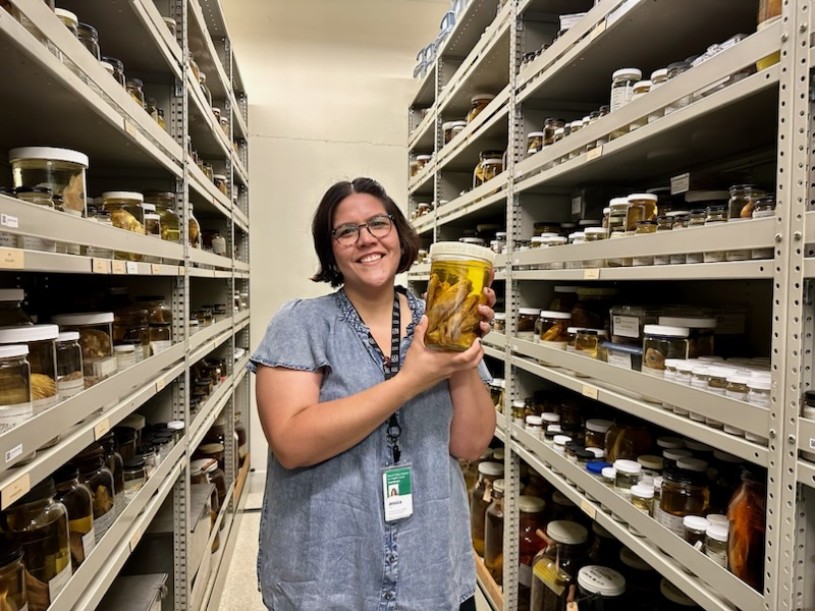
This research on the northern lampfish is part of a larger grant to study microplastics in six native fish species in Southern California and six in Northern California that have diverse diets and that occur in varied habitats. Over the two-year grant period, the scientists will delve into the guts of 500 individual specimens of fish who once swam and shimmied beneath the waves off the California coast at different times from the 1940s to the present.
“I think it's really important for us to look at pollution in wild animals, especially microplastic pollution, because it is very clear and abundant that we have a large impact on our environment,” said Ludt. “It’s important for us to gain this understanding so we can try to change our ways, and try to improve things in the future.”
